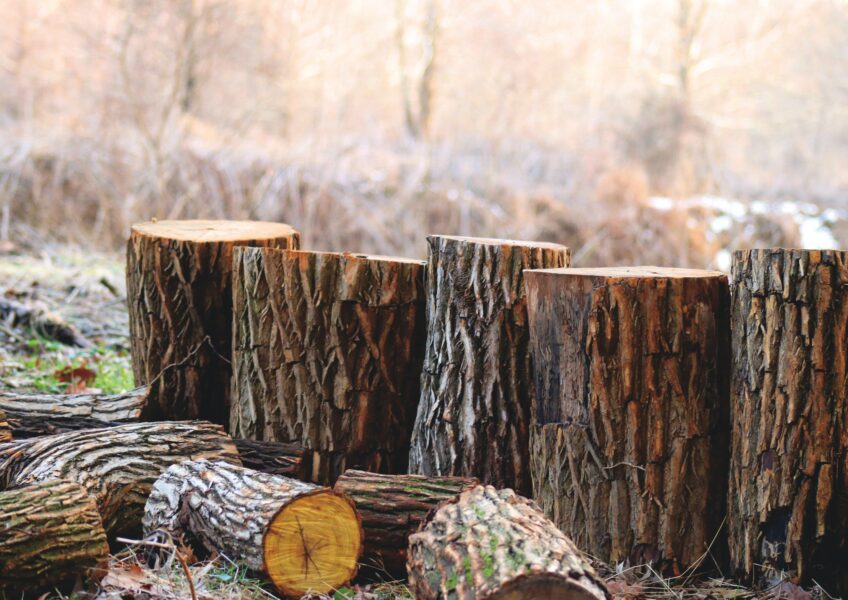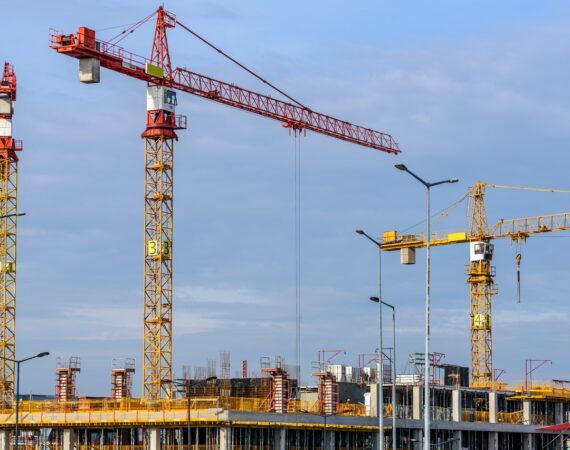How Lumber is Obtained from Trees
Lumber is a term relating to various woods as a construction material. The wood is cut from tree trunks lengthwise in square or rectangular sections. Wood has been used as a construction material since before written history, with the earliest evidence is found in Nice, France using wood posts to support a hut. The oldest wooden construction still intact was built 7,300 years ago in northwest Germany. The first reference to using a sawmill dates back to around 375 B.C. in northern Europe, which was powered by running water.
Hardwood and Softwood
There are two classifications of trees that lumber is produced from, known as softwood and hardwood. The defining characteristic between the two classifications is that the softwood doesn’t shed its needles during the winter, while hardwood sheds its leaves.
Hardwood is used for cabinetry, flooring, doors, trim work, and paneling. Softwood is used for joists, planks, rafters, beams, posts, decks, wall studs, sheathing, concrete forms, and subflooring. Both types of wood are graded based on the number and size of defects such as holes, splits, wanes (missing pieces), and knots. Higher grades are called select grades and have very few defects, while lower grades are called common grades and used for general construction purposes.
Manufacturing Process
Once a tree is cut down in a managed forest area owned by a lumber company, or leased by the government, the tree is transported to a lumber mill where it will be cut into various sizes and shapes.
- Felling – Trees are inspected and marked to be cut down. Two cuts are made at the base of the tree with one on each side to control the direction of the fall. Limbs are trimmed and the tree is cut into lengths suitable for transportation. A skidder (diesel-powered tractor), or yarder (self-propelled with telescoping hydraulic tower) is used to transport the tree sections to the trucks which take them to the lumber mill. The wood is stacked into piles called log decks which are sprayed with water to keep the wood from drying.
- Debarking and bucking – A rubber-tired loader picks up the logs from the log deck and places them on a conveyor which brings them into the mill. Sometimes the outer bark is removed to be used as fuel for the mill’s furnaces or sold as decoration. A circular saw called a bucking saw cuts the log into specified lengths.
- Head rig sawing large logs – Sensors scans both ends of the log to determine its diameter, length, and any defects. A computer calculates a suggested cutting pattern for maximizing the amount of lumber that can be made with the log. A head rig sawyer uses a head rig saw to cut the log based on personal experience and recommendations from the computer pattern. The first cut is made closest to the operator and is called the slab which is discarded into use as paper pulp. The log is then rotated to make additional cuts.
- Band sawing small logs – smaller diameter logs are passed through a series of band saws to cut them into smaller pieces at one time.
- Drying or seasoning – After the lumber is cut, it is moved into an area to dry or be seasoned to prevent decay and allow the wood to shrink as it dries. Lumber is dried differently based on the type of wood.
- Planing – Dried pieces of lumber pass through planers to trim them to their final size, smooth the wood, and round the edges.
- Grade stamping and banding – Every piece of lumber is visually inspected and stamped with its grading along with information on moisture content, and mill identification number. Bundles are made up according to the type of wood, grade, and moisture, then sent to lumberyards for sale.
Forensic Engineering Specialists
Engineering Specialists Inc. has nearly 30 years of field experience in analyzing the damage to residential, commercial, and industrial buildings. We can work on any project in any state, nationwide. When you or your business needs to confirm the extent of damage or how to correct a problem, email us at office@esinationwide.com or call us, toll-free, at (877) 559-4010.




